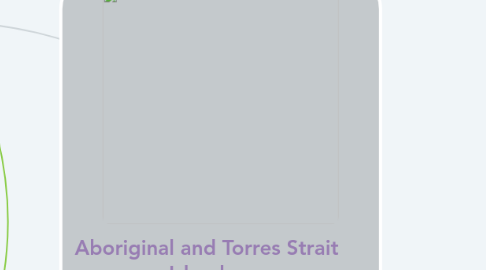
1. Teaching Rationale (Key Words)
1.1. Communication
1.2. Creativity
1.3. Belonging
1.4. Culturally Responsive
1.5. Identity
1.6. Respect
1.7. Country learning
1.8. Relationships
1.9. Culture
1.10. Recognition
2. Curriculum
2.1. Mathematics
2.2. English
2.3. Science
2.4. The Arts
2.5. Health and Physical Education
2.6. Technologies
2.7. Language
2.8. Humanities and Social Sciences
3. Cross-curriculum priorities
3.1. Sustainability
3.2. Aboriginal and Torres Strait Islander histories and cultures
3.3. Asia and Australia's engagement with Asia
4. Visual Arts
4.1. Student level: Year 3
4.2. Lesson objectives: Personal responses discussing the use of visual art elements in their own and other’s artwork, and identifying meaning in artwork from other cultures (ACAVAR113)
4.2.1. Students understand the diversity of art practices in Australia
4.2.2. Culture
4.2.3. Culturally responsive
4.2.4. Respect
4.3. Learning outcomes: 1. Students will view and respond to their own and others artwork within the classroom. 2. Students will view different Aboriginal artwork from around Australia. They will respond and share their response with the class. 3. Students will chose their favorite piece of Aboriginal artwork. They will then recreate this artwork in their own way using similar technique and pattern.
4.3.1. Cultural identity
4.3.2. Culture
4.3.3. Story telling
4.3.4. Learning environments
4.3.5. Resources
4.4. Resources needed: varied art materials, response sheets, Aboriginal artwork.
4.4.1. Aboriginal and Torres Strait Islander histories and cultures
4.4.2. Resources
4.5. Assessment: I will visually assess this lesson by looking at the language used to describe own and others artwork, specifically looking at the use of art elements
5. Cross curriculum: In the Western Australian Curriculum: The Arts, Aboriginal and Torres Strait Islander histories and cultures enrich understanding of the diversity of arts practices in Australia.
6. Early Years Learning Framework (EYLF)
6.1. Being
6.2. Belonging
6.3. Becoming
7. AITSL Standards
7.1. 1.4 Strategies for teaching Aboriginal and Torres Strait Islander students
7.1.1. Recognition
7.1.2. Cultural interface
7.1.3. Red dirt pedagogy
7.1.3.1. Communication
7.1.4. High expectations of students
7.1.4.1. Relationships
7.1.5. Cultural language
7.1.6. Two way learning
7.1.7. Cultural identity
7.1.7.1. Identity
7.1.7.1.1. Belonging
7.1.8. 3R's- Respect, Responsibility and Relationships
7.1.8.1. Respect
7.1.8.1.1. Relationships
7.1.9. Story telling
7.1.9.1. Respect
7.2. 2.4 Understand and respect Aboriginal and Torres Strait Islander people to promote reconciliation between Indigenous and non- Indigenous Australians
7.2.1. Histories
7.2.1.1. Respect
7.2.1.1.1. Recgonition
7.2.2. Anzac Day
7.2.2.1. Culturally Responsive
7.2.3. Past Policies
7.2.4. Culture
7.2.5. 4R's- Respect, Responsibility, Relationships and Recognition
7.2.5.1. Respect
7.2.5.1.1. Relationships
8. Children have a strong sense of identity
8.1. Children learn to interact with respect
8.1.1. Respect
8.1.1.1. Recognition
8.2. Children develop knowledgeable and confident self identities
8.2.1. Identity
8.3. Children learn to interact in relation to others with care, empathy and respect
8.3.1. Respect
8.3.1.1. Culture
8.3.1.1.1. Relationships
